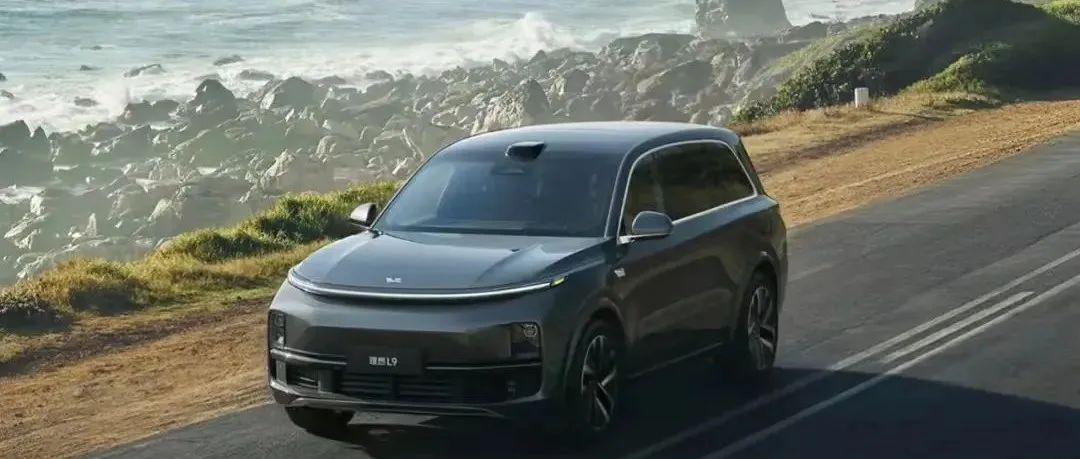Article by: Leng Zelin
Edited by: Wang Pan
Recently, Leading Ideal HK Limited, an affiliate of Li Auto, established a new company called Sichuan Leading Ideal Smart Mobility Technology Co., Ltd., which has drawn public attention to its chip design business.
The company is wholly-owned by Leading Ideal HK Limited, with George Li as its legal representative, and registered capital of 100 million yuan.
This is not the first time Li Auto has made progress in the chip industry this year. In March, Beijing Chehejia Automobile Technology Co., Ltd., and Hunan San’an Semiconductor Co., Ltd. jointly held shares to establish Suzhou SiCan Semiconductor Co., Ltd., with a registered capital of 300 million yuan, whose business includes the manufacture and sale of power electronic components, discrete semiconductor devices, and electronic components.
One of the shareholders of Suzhou SiCan Semiconductor Co., Ltd., San’an Semiconductor Co., Ltd., specializes in R&D, production, and sales of SiC substrate, epitaxy, and chip-related semiconductor materials, as well as the manufacture, sale, and R&D of power electronic components.
Substrates are the basis for producing chips. The third-generation semiconductor is SiC (silicon carbide) substrate. Currently, mid-to-high-end new energy vehicles all use SiC-based MOSFET instead of Si-based IGBT power semiconductors. For example, the second-generation electric drive platform used in the NIO ET7 adopts SiC modules.
Simply put, using SiC in new energy vehicles can help extend range and reduce charging time.
In an interview with Photon Go last year, NIO’s senior vice president, Zeng Shuxiang, said that NIO’s early investment in this technology helped the company achieve mass production six months to a year ahead of its competitors.
Li Auto CEO Li Xiang has previously stated that the SiC electric drive system is one of the four core technologies of its high-voltage pure-electric platform.
Considering that Li Auto has previously announced its plan to launch two high-voltage pure-electric platforms, Whale and Shark, in 2023, it is not surprising that the company is entering the SiC chip market.
What makes people curious is whether Li Auto will join the camp of self-developed autonomous driving chips.
In early 2020, Xpeng Motors was reported to have formed a team of less than 10 people to develop autonomous driving chips and plans to start testing them in late 2021 or early 2022. At the end of 2020, NIO began planning for a self-developed chip project and established the Smart Hardware team.
NIO founder Li Bin also told the media that a self-developed autonomous driving chip is not difficult, but easier than a smartphone chip, and NIO will maintain its competitive edge.The overall integration and manufacturing process of self-driving chips is not as complex as mobile chips. However, for automotive chips, stability and reliability are more important, as they have to withstand different temperatures and harsh environments, and their design life is much longer than that of mobile chips.
Perhaps this is one of the reasons why we have not yet seen NIO and XPeng take out self-developed self-driving chips.
The well-known story among new energy vehicle companies is that Tesla gave up using Mobileye and Nvidia chips and instead embarked on a fully self-developed path from hardware to software for autonomous driving.
However, things change with time. The lack of Mobileye’s software-hardware integrated solution and Nvidia’s computing power forced Tesla to go down the self-developed path. But now, various chip companies have provided suitable solutions and sufficient performance. Is self-development still cost-effective?
Leading Ideal One, automaker Leapmotor took three years in the starting phase to develop its own intelligent driving chip-lingxin C01. However, Lingxin C01 had higher computing power than Mobileye Q4 released in 2018 when it was launched in 2020, but it is not enough with the 4.2 TOPS computing power at present.
This raises another issue with self-developed chips that requires long-term and stable investment, sufficient technical reserves, and constant updates and iterations to maintain sufficient competitiveness in the market.
Founder of NIO – Henry Xia – admitted in an interview that Lingxin 01 has no new chip development plan for LingPao after C01, as there are already so many options available on the market.
In fact, this is still an investment and output issue, especially for new car manufacturing companies.
For example, Geely’s investment in Zhanqi Technology launched a 7nm car-grade chip last year, which will be on the market this year. The 5nm process chip and 256 TOPS autonomous driving chip will be launched in 2024 and 2025, respectively.
Although “Long Ying No. 1” benchmarked the high-pass 8155 chip for intelligent cockpit chips, how many cars did Geely sell last year? 1.328 million units. Ideals, even as a dark horse last year, has sold less than 100,000 vehicles. They cannot fully afford the amortized R&D costs of chips and subsequent investments in stability. In addition to this, Ideal also needs to consider the development of follow-up models, as well as investment in software and algorithm in the fiercely competitive new energy market.
Ideal Auto’s preferred way of self-development may be to cooperate with autonomous driving chip manufacturers.
For example, Horizon Robotics proposed a new mode at this year’s annual EV100 summit – to open up BPU (Brain Processing Unit) IP authorization.This mode enables Horizon to provide the entire BPU software package, chip reference design and technical support to the entire vehicle factory, enabling car companies to independently develop autonomous driving capabilities with differentiated and core functions.
The 2021 model of the LI ONE, which uses Horizon’s Journey 3 chip, has already had some basis for cooperation between the two companies.
This article is a translation by ChatGPT of a Chinese report from 42HOW. If you have any questions about it, please email bd@42how.com.
